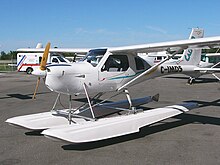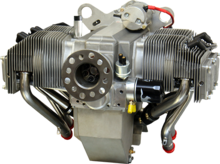|
Jabiru Aircraft
Jabiru Aircraft Pty Ltd is an Australian aircraft manufacturer that produces a range of kit- and ready-built civil light aircraft in Bundaberg, Queensland. The company also designs and manufactures a range of light aircraft engines. Types past and present include microlights (Ultralight or ULM), including the Calypso, two-seat trainers and recreational aircraft (J120/J160/ J170/J230) and four-seat aircraft (J400/J430/J450). The aircraft are built largely of composite materials and are conventional high-wing monoplanes with typically tricycle undercarriage. Taildragger versions were produced in the early days of Jabiru. The wings could be removed for ease of storage or transportation. Use of modern composite techniques has resulted in a strong yet light structure. The aircraft are designed around the pilot and passengers, being spacious and comfortable for touring, yet with a small footprint and frontal profile. Controls include a centrally mounted control column, brake and trim lever. There is also a Jabiru assembly facility in George, Western Cape, South Africa.[1] History         The company was formed in 1988 by Rodney Stiff and Phil Ainsworth to manufacture affordable light aircraft in kit and certified forms.[citation needed] In October 1991, the first aircraft (Jabiru LSA 55/2k), was certified by the Australian Civil Aviation Authority.[citation needed] Due to the original engine manufacturer, Italian American Motor Engineering ceasing production of the KFM 112M aero engines, the company started development of its own engines, and by 1995 the Jabiru 2200, a horizontally opposed four-cylinder air-cooled aviation engine, was available for delivery. Since then the six-cylinder Jabiru 3300 and eight-cylinder Jabiru 5100 have been added to the range.[citation needed] Also in 1995, it was decided to offer the aircraft range as amateur-build or experimental self-build kits.[citation needed] The microlight version of the Jabiru two-seater aircraft, the Jabiru UL, holds two world speed records for three-axis microlight aircraft.[2] These were set over 50- and 100-kilometre predefined courses and certified by the FAI (Fédération Aéronautique Internationale).[citation needed] AircraftFactory-builtEarly Models
Current Models
KitplanesEarly Models
Current Models
EnginesJabiru produces its own range of lightweight, four-stroke, horizontally opposed, air-cooled engines, specifically designed and engineered for use in aircraft. All engines are direct drive and are fitted with alternators, mufflers, and dual ignition systems as standard. Over 3,900 four-cylinder engines and over 2,900 of the six-cylinder engines have been produced.[citation needed] Early Models
Current Models
In November 2014, the Australian Civil Aviation Safety Authority (CASA) required passengers to sign an acknowledgement of risk before flying, and restricted IFR-equipped aircraft to day VFR flight within gliding distance of a safe place to land.[3] In the following two years, CASA inspectors witnessed the tear-downs of failed Jabiru engines and also high-time engines that had not failed. In 2016, this resulted in exemptions to these restrictions for all aircraft that complied with the manufacturer's engine maintenance manuals, service letters, bulletins, flight operation manuals and that had no unapproved modifications.[citation needed] Both the manufacturer and Recreational Aviation Australia (RA-Aus) opposed the restrictions as unnecessary and unwarranted.[4] RA-Aus reported that it was supplied with only a fraction of CASA's source data – just a day before submissions closed – and that CASA seemed to have excluded all engine reliability data post-"early 2014".[5] References
External links |
||||||||||||||||||
Portal di Ensiklopedia Dunia
